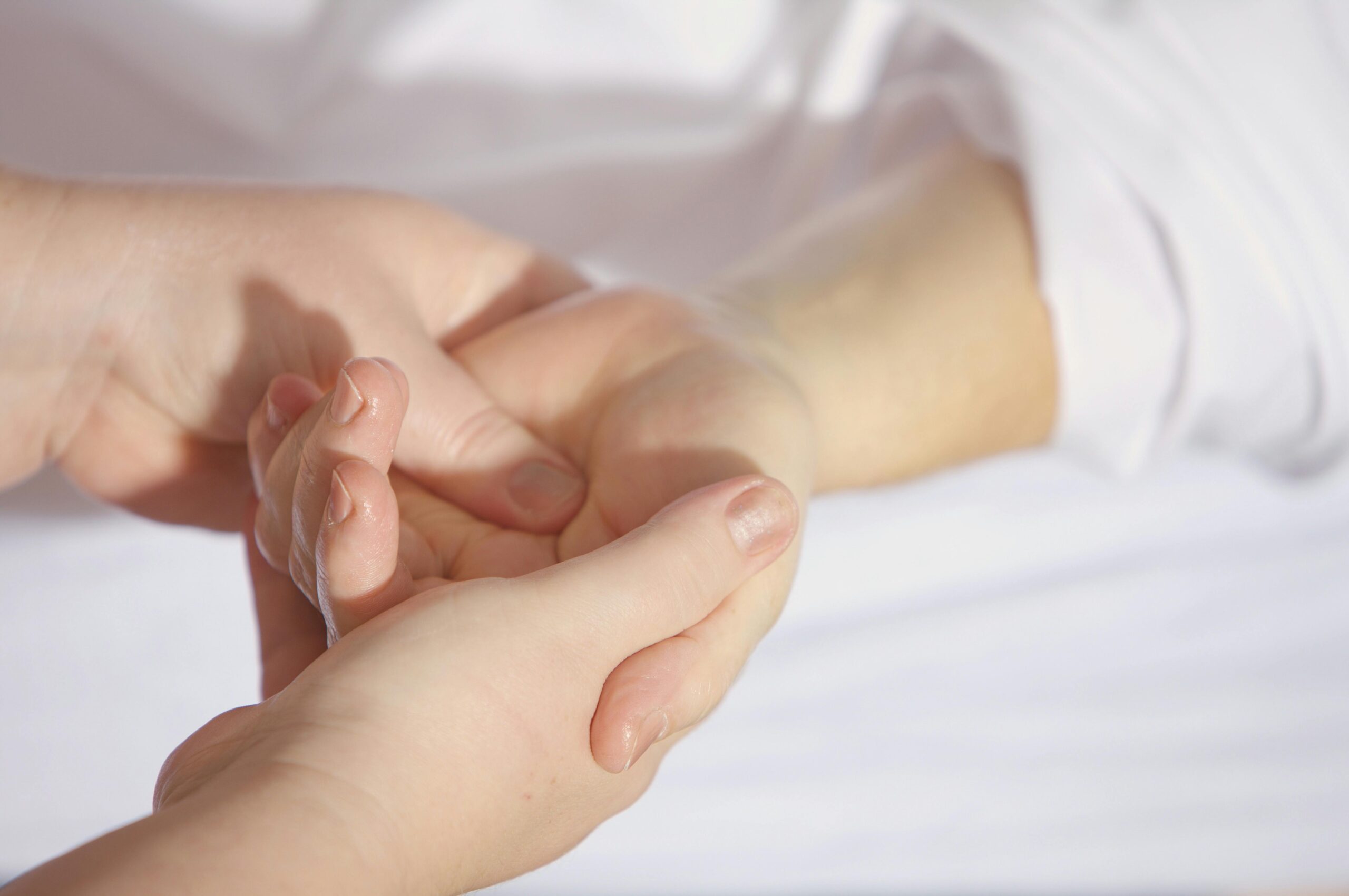What Is The Most Pleasurable Type Of Massage? Massages for Ultimate Relaxation

Finding meaningful ways to de-stress is essential in a culture where chronic stress may be harmful to our physical and mental well-being. The intriguing question of “What Is The Most Pleasurable Type Of Massage?” is raised by this.Depending on individual preferences and specific health requirements, the answer may vary, but the main focus of this topic is the different massage techniques that provide not only relaxation but also rejuvenation.From the mild pressure of Swedish to the targeted pressure of deep tissue treatment, each form of massage has advantages of its own. In this introduction, we’ll look for the most pleasurable and beneficial massage techniques to support physical healing, mental clarity, and spiritual elevation.
Understanding the Art of Massage
Massage therapy, an ancient practice that spans various cultures and continents, is much more than a simple spa luxury. It is an art form rooted in principles of human anatomy and wellness, designed to enhance both physical and mental health through specialized techniques and strokes. The art of massage encompasses a broad spectrum of styles, each tailored to address specific needs, from relaxation and stress reduction to pain relief and muscle recovery.
At its core, massage therapy involves manipulating the layers of muscle and connective tissue to enhance their function, aid in the healing process, and promote relaxation and well-being. This manipulation is achieved through various techniques, including rubbing, kneading, tapping, and pressure, which are applied systematically to target areas of the body.
Understanding the different types of massage is crucial for choosing the right therapy for your needs. Swedish massage, for instance, uses long strokes and light to medium pressure to promote relaxation and improve circulation. Deep tissue massage, on the other hand, targets deeper layers of muscle and is often used to address chronic pain and muscle tension. Other specialized forms, such as Thai massage, combine acupressure and yoga-like stretches, offering a dynamic solution for enhancing flexibility and stress relief.
The effectiveness of massage therapy lies in its ability to reduce stress hormones, such as cortisol, while increasing levels of serotonin and dopamine, neurotransmitters that help reduce depression and anxiety. Physically, massage can help alleviate pain, improve circulation, and release muscle tension. These benefits make massage therapy not only a pleasurable experience but also a therapeutic one, capable of contributing to long-term health and wellness.
Specialized Massage Techniques
Massage therapy is not just a general practice but a collection of highly specialized techniques designed to cater to various preferences and health needs. Among these are aromatherapy massage, hot stone massage, and shiatsu massage, each offering unique benefits and experiences. Understanding these techniques can help you choose the most appropriate type for your needs, whether you’re seeking relaxation, pain relief, or both.
Aromatherapy Massage: Engaging the Senses
Aromatherapy massage combines the soothing power of touch with the therapeutic benefits of essential oils extracted from herbs, flowers, and fruits. This type of massage primarily focuses on enhancing emotional and physical well-being through the sense of smell and the absorption of oil compounds into the skin. Essential oils like lavender for relaxation, eucalyptus for respiratory health, and chamomile for stress reduction are commonly used. The inhalation of these oils during a massage helps to calm the mind and alleviate stress, while the massage technique itself works to improve circulation and muscle tension.
Hot Stone Massage: Deep Heat Relaxation
Hot stone massage is renowned for its ability to provide deep muscular relaxation through the application of heated volcanic stones placed at key points on the body. The heat from the stones penetrates deep into the muscles, promoting greater relaxation than traditional massage alone. This technique not only eases tight muscles but also improves circulation and blood flow, helping to detoxify the body and heal sore tissues. The warm stones also have a sedative effect that can relieve chronic pain, reduce stress, and promote deep relaxation.
Shiatsu Massage: Pressure Points Technique
Shiatsu, a Japanese massage technique, involves rhythmic pressure along the body’s meridian points, which are pathways through which life energy flows. This method is often referred to as a “finger pressure massage,” as it typically uses thumbs, hands, elbows, knees, and feet to apply pressure. Shiatsu can help relax the muscles and improve circulation; it is particularly noted for its effectiveness in treating specific conditions like headaches, PMS, digestive disorders, and fatigue. The technique aims not only to relax but also to stimulate the body’s natural healing abilities by balancing the energy pathways.
What to Expect During Your Massage Session
Before the Session: Consultation and Preparation
Your massage session will typically begin with a brief consultation. Your therapist will ask about your health history, any specific pain points, and what you hope to achieve from the massage. This is the time to communicate any allergies, medical conditions, or concerns you might have. It’s important to be open and honest during this stage to ensure the massage is tailored to your needs and is conducted safely.
You will usually be asked to undress to your level of comfort. Depending on the type of massage, you may need to undress completely or only partially. You’ll be given privacy to undress, and you’ll lie down on the massage table, typically under a sheet or towel.
During the Session: Techniques and Adjustments
Once you’re settled, the massage therapist will typically start with gentle strokes to warm up the muscles. As the session progresses, they may use various techniques suited to your needs and the type of massage you are receiving. For example:
- Swedish Massage: Expect long, flowing strokes combined with kneading and circular movements.
- Deep Tissue Massage: The therapist will use slower, more forceful strokes to target deeper layers of muscle and connective tissue.
- Hot Stone Massage: Smooth, heated stones are placed on specific parts of the body and used to massage muscles.
- Shiatsu Massage: Pressure and rhythmic tapping are applied along energy pathways of the body to stimulate “chi” or energy flow.
After the Session: Winding Down and Aftercare
Once the massage is complete, your therapist will leave the room to allow you to dress in privacy. Take your time getting up, as you might feel lightheaded or relaxed to the point of sleepiness.
After dressing, it’s typical to have a short follow-up discussion with the therapist. They might provide some feedback on what they noticed about your muscle condition and offer advice on how to care for yourself after the massage, such as staying hydrated and avoiding strenuous activity for the rest of the day.
Hydration and Recovery
It’s important to drink plenty of water after a massage. This helps flush out any metabolic waste that has been released from your muscles during the massage. You may feel some soreness, especially if you had deep tissue work; this is normal and should subside within a day or two.
Choosing the Right Massage for You
Understand Your Health Goals
First, assess what you aim to achieve through massage therapy. Are you looking for relief from pain? Stress reduction? Enhanced athletic performance? Each massage type offers specific benefits that cater to different needs. For example:
- Pain Relief: Consider deep tissue, shiatsu, or sports massage.
- Relaxation: Swedish, aromatherapy, and hot stone massage are excellent choices.
- Increased Flexibility: Thai massage or sports massage might be the best fit.
Consider Your Pain Tolerance and Preferences
Some massages, like deep tissue and shiatsu, involve firm pressure and can sometimes be quite intense. If you are sensitive to pressure or prefer a gentler approach, you might find Swedish or hot stone massage more comfortable. Understanding your pain tolerance and personal comfort will help guide your choice.
Discuss with a Professional
If you’re unsure about the best type of massage for you, consider consulting with a massage therapist or healthcare provider. They can offer recommendations based on your specific health conditions and personal preferences. A professional consultation can be particularly helpful if you have specific health issues like injuries, chronic pain, or pregnancy.
Consider Frequency and Duration
Your commitment to massage therapy can also influence your choice. Some massage types are better suited for occasional relaxation, while others might be part of a therapeutic plan for chronic issues. For example, if dealing with chronic stiffness or pain, regular sessions of deep tissue massage might be recommended.
Try Different Styles
Sometimes the best way to determine the most suitable massage for you is by experience. If possible, try different types of massages to understand how your body reacts to each style. This can be particularly enlightening, as personal experience often dictates the best choice for your body’s needs.
Listen to Your Body
After receiving a massage, take note of how your body feels over the next few days. Do you feel relaxed? Did your pain or discomfort improve? Your body’s response can provide significant insights into the effectiveness of the style of massage you chose and whether it’s right for you.
Conclusion
Examining “What is the most pleasurable type of massage?” reveals a wide range of therapeutic approaches designed to accommodate various requirements and preferences. Every massage technique, from the deep, focused pressure of a Thai massage to the soft, rhythmic strokes of a Swedish massage, has special advantages that can significantly improve both physical and mental well-being.Ultimately, the most pleasurable massage is subjective and varies from person to person, depending on individual health goals, pain tolerance, and specific conditions. By understanding the various techniques and their benefits, you can make an informed decision about which type of massage will provide you with the most personal satisfaction and health benefits. Remember, the key to a truly pleasurable massage experience lies in choosing the right type that resonates with your body’s needs and your personal wellness journey.

I have a question about the best type of massage for pain relief. I have been experiencing some chronic back pain and I am looking for a massage that can help me to manage the pain. Do you have any recommendations?
I am also interested in learning more about the benefits of aromatherapy massage. I have heard that this type of massage can be very relaxing and can also help to improve mood. Can you tell me more about the essential oils that are used in aromatherapy massage?
Thank you for sharing this informative article! I have always been curious about the different types of massage and their benefits. This article has definitely given me a better understanding of what each type of massage entails. I will be sure to keep this in mind when I am next looking for a massage.